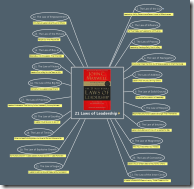As a novice screencaster, I found every section of The Screencasting Handbook enlightening. Particularly helpful is Ian Ozsvald’s coverage of microphone selection for improving audio recording quality. In my case, simply moving from an analog to digital input dramatically improved audio quality and reduced post-editing time to nearly nothing. I recommend The Screencasting Handbook to anyone wishing to learn about this technology or wishing to improve their screencasting skills. I believe every novice and most experts will find something beneficial in The Screencasting Handbook that will easily cover the cost of the book.
April 2010 archive
Permanent link to this article: http://darrylpendergrass.com/Blog/the-screencasting-handbook/
Apr 25
Screencasting
To support the introduction of a new capability for an enterprise project management system at Motorola, I took a dive into creating a series of screencasts that provided overviews and examples of the capability.
I started with some open-source offerings but after two days purchased Camtasia Studio from TechSmith. The speed to produce the screencasts increased dramatically as did the overall quality. Initially, one of the big hurdles was audio quality. I used several products in an attempt to clean the audio to an acceptable level of quality but soon discovered the importance of digital audio input. I was using an analog microphone input, which is very susceptible to electronic noise. Switching to a USB microphone immediately raised the audio quality to acceptable levels.
I also purchased an eBook from Ian Ozsvald called The Screencasting Handbook: Teaching you to become a better screencaster. The book is a work in progress that is nearing the initial release. Ian addresses many topics of importance to those new to screencasting. Some of the topics covered in the book follow.
- Actual examples describing the uses and benefits of screencasting.
- Steps for creating simple screencasts to more sophisticated screencasts
- File formats
- Screencast distribution
- Screencasting software
- Audio hardware and recording techniques
- Video and audio editing applications
- Support tools and links to additional material and resources
While I am far from a professional screencaster, I did successfully produce four screencasts with favorable customer feedback and had some fun at the same time. In future posts, I’ll cover some of my lessons learned.
Permanent link to this article: http://darrylpendergrass.com/Blog/screencasting/
Apr 25
Laws of Leadership
I recently read The 21 Irrefutable Laws of Leadership: Follow Them and People Will Follow You by John C. Maxwell and created
 a mind map of the table of contents to serve as a reminder of these leadership laws. The mind map hangs in both my work office and home office. Select the graphic to download a PDF of the mind map.
a mind map of the table of contents to serve as a reminder of these leadership laws. The mind map hangs in both my work office and home office. Select the graphic to download a PDF of the mind map.
In the book, John shares his leadership insights and provides enough information for diligent readers to learn and apply the principles to increase their individual leadership effectiveness.
Over the coming weeks, I plan to share some of my personal insights and lessons learned from the book. I encourage you to read and study the laws and apply them to improve your leadership effectiveness.
Reference
Maxwell, John. (2007). The 21 irrefutable laws of leadership. Nashville, TN: Thomas Nelson Publishers.
Permanent link to this article: http://darrylpendergrass.com/Blog/laws-of-leadership/
Apr 24
The Portfolio Effect
At the personal or organizational level, we all realize multiple demands for our time. We often process these multiple demands independently but collectively many of these demands are organized and prioritized using a portfolio. Within the organization, project managers typically focus on a limited number of projects. However, the organizational portfolio contains all projects ranked by a variety of inputs, desired outputs, and strategic objectives.
The effective project manager addresses assigned projects while keeping a big picture view and understanding the organizational portfolio. The organizational portfolio presents risks to an individual project by through explicit or implicit constraints, such as resources and money. As a result, I recommend reviewing, understanding, and considering the effect of the applicable portfolio to your project. The more you understand about the portfolio and the risks the portfolio contributes to your project, the better prepared you are to plan, schedule, and manage your project.
Permanent link to this article: http://darrylpendergrass.com/Blog/the-portfolio-effect/
Apr 10
Introduction
My project management experience lies within product software development and information technology. In product development, I developed test software for military systems. In the information technology space, I develop applications that support an enterprise project system system delivering services and capabilities to project managers around the globe. The applications require integration at the system level to provide seamless delivery of capabilities to the user community.
While a software developer for most of my career, my interests span the entire life-cycle of software develop – concept to retirement. As a dedicated, life-long, learner, I spend countless hours reading and learning to better understand the concepts and apply to successful delivery of services to clients.
I also enjoy sharing information with others. First, to learn from the experiences of other professionals and second, to share my experience for the benefit of others. I will use this forum expressively to achieve those purposes.
Permanent link to this article: http://darrylpendergrass.com/Blog/introduction/
